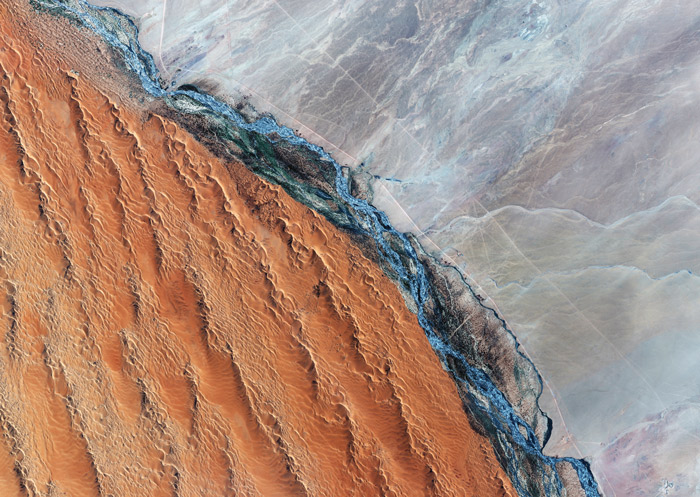A Desert River
Mar 20, 2018
 The Kuiseb River flows–when it flows–down from the highlands of eastern Namibia and across the Namib Desert toward the Atlantic Ocean.
The Kuiseb River flows–when it flows–down from the highlands of eastern Namibia and across the Namib Desert toward the Atlantic Ocean.
South of the river, some of the highest sand dunes on earth are blown ever northward by the prevailing winds, but the sand can't cross the river. North of the river is a vast plain of bare rock, much of it billions of years old, Precambrian, predating the emergence of life.
The river itself, like many desert rivers, is ephemeral, flowing briefly after rains. The rains come–if they come–in January, February, or March. By April, the riverbed is dry. Even so, scrubby vegetation has taken hold along its banks.
Sand from the dunes is literally choking off the river. The river water, which often is not much more than a trickle, has to carry heavy loads of sand from upstream, traveling in a riverbed already piled high with sand blown in during the dry season, on top of sand left behind in previous years by the slow, struggling current.
There is so much sand now in the Kuiseb River that most years the water can no longer reach the sea. Only extreme flooding can push river water all the way to the river's mouth at Walvis Bay on Namibia's Atlantic Coast; the last time this happened was in 1963, though the river came within a few kilometers of the sea in 1997 and might have made it all the way but for a hastily bulldozed artifical sand dune blocking its path to protect the salt works at Walvis Bay.